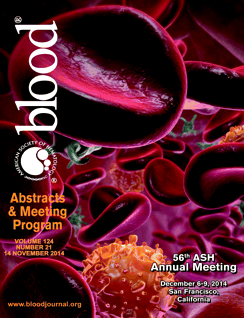Abstract
Introduction: Some evidences suggest that heat shock protein 70 (HSP70) is overexpressed in many types of cancer, and that high expression of this chaperone is linked with increasing tumor grade and/or poor prognosis. The overexpression of HSP70 may provide a selective advantage for tumor cell survival, due in part, to its ability in inhibiting cell death via APAF-1 (apoptosis protease activating factor 1) and Caspase 9. The TP53 Regulated Inhibitor of Apoptosis 1 (TRIAP1) gene can modulate apoptotic pathways by interaction with HSP70. Some studies have shown that HSP70 gene silencing using antisense RNA, abundantly induced cell death in breast cancer lines and it was not toxic to normal breast epithelial cells or human fibroblasts. This cell death was not dependent on P53status or inhibited by Bcl2 pathway. Other studies using HSP70 antisense RNA have also indicated apoptosis of tumor cells in lung cancer, oral cavity, colon, prostate, liver, and brain cell lines. Although there are several studies on the role of HSP70 gene in apoptosis and drug resistance, there is a lack of information about this gene in multiple myeloma (MM).
Objectives: To analyze the importance of HSP70 and TRIAP1 as potential targets for MM therapy through: 1) stable silencing of HSP70 and TRIAP1 in MM cell lines; 2) evaluation of each gene silencing effect on cell cycle and apoptosis.
Methods: The expression of TRIAP1 and HSP70 genes in MM cell lines (U266, SKO-007, SK-MM2 and RPMI8226) was examined by quantitative real time PCR (qPCR). Cell lines were submitted to transduction with pLKO lentiviral vector containing short hairpin RNAs (shRNAs) for silencing the target genes (shRNAHSP70 and shRNATRIAP1). Lentiviral vectors with control sequences (scramble) were used to transduce the same cell lines. Apoptosis was assessed by flow cytometry after annexin V and propidium iodide (PI) staining. We also evaluated APAF-1 and Caspase 9 gene expression by qPCR and Caspase 9 and Caspase 3/7 protein activity.
Results: The cell lines RPMI8226 (without deletion of P53 by FISH) and U266 (deletion of one allele of P53 by FISH) were chosen for the transduction experiments because they showed relevant expression of TRIAP1 and HSP70. The efficiency of transduction, as measured in both cell lines transduced with the pLKO vector containing the GFP reporter gene, was 70%, demonstrating that there would be no technical restriction to perform this experiment. RPMI8226 and U266 were submitted to three independent transductions, in triplicate, with the lentiviral vector containing the constructs pLKO shRNATRIAP1, shRNAHSP70 and shRNAscramble. We obtained the silencing of TRIAP1 and HSP70 genes in both MM cell lines when the transduced cell lines were compared with shRNAscramble. Silencing was confirmed by relative qPCR and Western blotting (for HSP70 only). Inhibition of TRIAP1 expression significantly increased the percentage of cells in late apoptosis (annexin V+/Propidium Iodide+) analysis (p<0.001 for RPMI8226 and P<0.01 for U266) one week after transduction and it was accompanied by increased expression of Caspase 9 in both MM cell lines (p<0.001 for RPMI8226 and p<0.05 for U266 cell lines) (One-Way ANOVA with Tukey´s multiple comparison test) when transduced cells were compared with the respective wild type cell lines. Furthermore, the inhibition of TRIAP1 resulted in accumulation of hypodiploid cells after 24 hours of transduction in U266 cell line. Inhibition of HSP70 showed no significant changes in the cell cycle in both MM cell lines. However, we observed an increment in late apoptosis after inhibition of this gene in the two cell lines when the inhibited cells were compared with cells transduced with shRNAscramble one week after transduction (p<0.01 for RPMI8226 and p<0.05 for U266 cell lines) and the results were confirmed by increased activity of Caspase 3/7 (p<0.01 for RPMI8226 and p<0.05 for U266). We observed significantly increase of Caspase 9 activity when RPMI8226 was transduced with shRNAHSP70 (p<0.001).
Conclusion: Stable silencing of HSP70 and TRIAP1 in MM cell lines showed a strong impact on the induction of late apoptosis, through APAF-1/Caspase 9 pathway, suggesting that inhibitors of both genes could be exploited as potential targets for the treatment of MM, helping patients whatever P53 status assessed by FISH, as suggested by previous studies in other types of cancer (Support by FAPESP 2010/17668-6).
No relevant conflicts of interest to declare.
Author notes
Asterisk with author names denotes non-ASH members.

